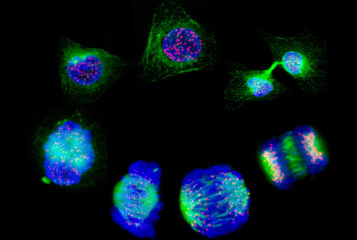Splitting and reconstituting the enzyme used in the base editing method of genome editing may make more controlled changes possible.
Base editing differs from the CRISPR/Cas9 method because instead of cutting and replacing a section of DNA, an enzyme called DNA deaminase chemically changes a target base. However, unregulated DNA deaminase activity can result in unwanted mutations, some of which are involved in cancer. By splitting the enzyme into two inactive pieces which could be triggered to reassemble, the components can be safely introduced into a cell and will not make changes until activated.
Study author Dr Rahul Kohli from the University of Pennsylvania, said: 'Our newly created split-engineered base editors really offer new potential for both research and therapeutics.'
According to research published in Nature Chemical Biology, base editors produced unwanted mutations and were unable to introduce changes at specific times. The new technique identified in the study allows researchers to temporally control the gene editing and stop naturally occurring but unwanted genome changes, allowing for more precise control. The technique also has the potential to be used in vivo.
The team identified sites in the DNA deaminase protein that allowed them to split the enzyme into two inactive pieces. The fragments were then chemically triggered to reassemble into a functional enzyme by the presence of a cell-permeable molecule called rapamycin.
These components, called split-engineered base editors (seBEs), can be introduced to the cell but remain inactive until rapamycin is added, turning on the base editing complex to induce the desired changes at the desired time.
'Since we can control the time mutations are made, there is a possibility to use these seBEs in vivo to model diseases by altering a gene, similar to how scientists control the timing of gene knockouts, and even potentially someday offer clinicians the ability to control editing of a patient's genes for treatment purposes,' said Dr Kohli.
The researchers believe their work offers new possibilities in therapeutic research. Co-author Dr Junwei Shi said: 'Splitting DNA deaminase can also work outside of base editors... As a cancer researcher, I see this technique as having potential in controlling genetic changes that cause cancer development and growth.'





Leave a Reply
You must be logged in to post a comment.